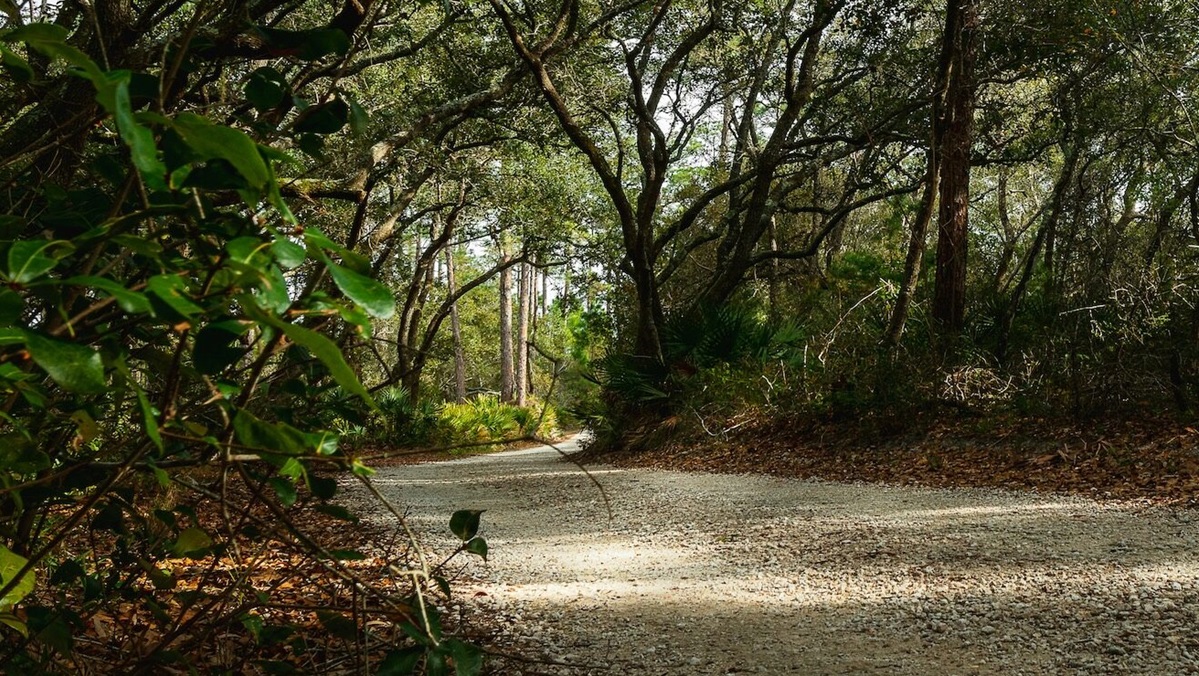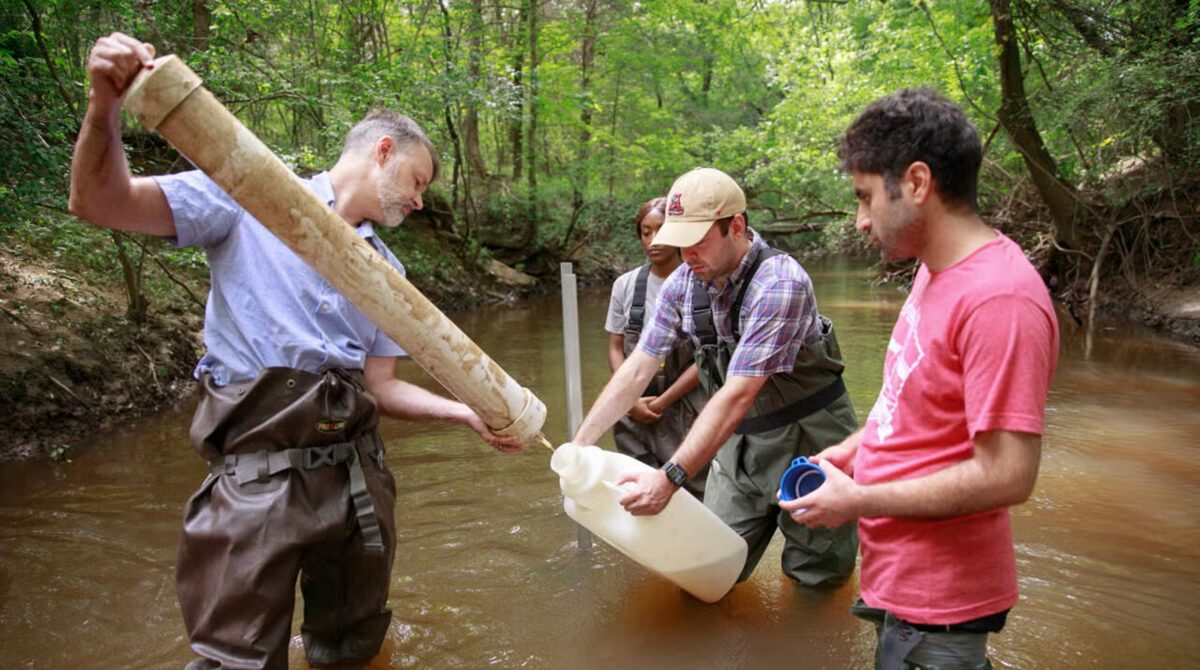Seven years after its creation, development of Birmingham Civil Rights National Monument picking up speed

Jamie Jordan recounts for visitors to the A.G. Gaston Motel the momentous events that took place there in 1963. The partially restored motel is part of the Birmingham Civil Rights National Monument. (Michael Sznajderman / Alabama News Center)
The following is part of Alabama News Center’s ongoing series, “Bending Toward Justice,” focusing on the 60th anniversary of events that took place in Birmingham during 1963 that changed the face of the city, and the world, in the ongoing struggle for equality and human rights. The series name is a reference to a quote by Martin Luther King Jr.: “Let us realize the arc of the moral universe is long but it bends toward justice.” The series continues through the end of the year.
It’s a surprisingly balmy, mid-December day and Jamie Jordan, a 24-year-old AmeriCorps member assigned to the National Park Service, is leading a small group of visitors around the courtyard of the historic A.G. Gaston Motel, one of the marquee sites within the Birmingham Civil Rights National Monument.
Her audience on this Friday afternoon is a mix of white and Black visitors, older folks and young families with children. Several have come in from out of state. One couple is in the midst of a Southern civil rights driving tour that is taking them across the region.
Jordan shares photographs of some of the historic moments that took place at the motel during the height of the 1963 campaign that led to the elimination of Jim Crow laws in Birmingham – considered by many at the time to be the most segregated city in the South.
That campaign, in which Black children and teenagers led protests challenging separate and unequal treatment, and which was followed by the horrific racial terrorist bombing of Sixteenth Street Baptist Church that killed four young girls, sparked policymakers to approve the 1964 Civil Rights Act – ending, once and for all, legal segregation in the United States.
That Jordan was born several decades after the pivotal events in Birmingham that changed the course of global human rights was no deterrent to her providing visitors an authoritative recounting of the Gaston Motel’s role in the civil rights struggle.

The A.G. Gaston Motel is open again to visitors who want to learn about its namesake and its role in civil rights history. (Michael Sznajderman / Alabama News Center)
Built by A.G. Gaston, then the state’s wealthiest Black businessmen, the motel was where the Revs. Martin Luther King Jr., Fred Shuttlesworth, Ralph Abernathy and other civil rights leaders plotted the course of the Birmingham campaign, a place where famous Black entertainers stayed when they performed in town and the site of another bombing aimed at murdering King – except that he had left the motel hours earlier.
Jordan is among the small cadre of paid professionals and volunteers who make up the team that provides tours of the partially restored motel on the three days it is now open. So far, the motel offers an exhibit about A.G. Gaston, with a coffee shop expected to open in the coming weeks – both operated by the city of Birmingham. The exterior of the structure also has been restored, with the motel’s iconic sign out front, and balcony rails repainted the precise color they sported in 1963. Within the next couple of years, the Park Service hopes to restore at least a portion of the hotel rooms to how they looked 60 years ago, including the one known as the “War Room” where King stayed and where strategy meetings were held. The motel’s old reception area also will be restored and is expected to serve as a visitor center for the National Monument – the first stop for people embarking on a tour of the multiple sites within the Monument’s footprint.
Some people may question why, some seven years since President Barack Obama created the National Monument – one of the final acts of his administration – there hasn’t been more visible development at Monument sites. But Patrick Gamman, the Monument’s interim superintendent, said the tempo of progress is picking up.
Earlier this year, park officials completed a master plan for the monument after years of research, public outreach and a lengthy comment period. The next phase involves expanding the staff on the ground who provide programming and tours, and – as the federal budget and other resources will allow – enhancing facilities.
Gamman said a new chief of interpretation is expected to be in place in January and soon, a permanent Monument superintendent. The Park Service is also gearing up to hire more seasonal rangers who will serve as tour guides and support expanded programming, particularly during the busy summer season. In all, Gamman said, he expects the team to double in size to eight people by mid-2024.
Gamman encourages area college students – Jordan is a recent graduate of the University of Alabama – to apply for the new seasonal positions. He said they should be posting soon on the government’s employment site, usajobs.gov. “We would love it if local people applied,” he said.
Gamman said once the new superintendent and the expanded interpretative team are in place, programming at the Monument also will expand. He noted that a new temporary exhibit is in the works, called “Voices of the Movement.” It will feature actual recordings from the height of the Birmingham campaign, including Shuttlesworth speaking at a 1963 press conference, King speaking to protestors at the Gaston Motel and Abernathy speaking during a church rally in Birmingham. The exhibit will also give visitors a chance to add their own voices to the conversation – by leaving a voice message for people who took part in the protests or by sharing their own experiences from that time.
Gamman said conversations are also ongoing with local leaders and interested citizens about how the Monument should continue to be developed over time. That includes close collaboration with the leaders of other important sites within the Monument footprint, such as the Birmingham Civil Rights Institute, historic Bethel Baptist Church in the Collegeville neighborhood and Sixteenth Street Baptist, which is preparing to build a new interpretative center adjacent to its historic building.
“A lot of stuff is happening,” Gamman said, acknowledging that some people probably wish the process moved more swiftly.
“It will take more time than you want, but it’s better that we take the time and do it the right way,” he said.
To see the latest developments, and information about events and programs connected to the Birmingham Civil Rights National Monument, click here.










